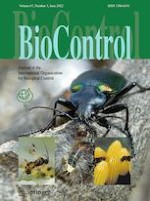21.03.2022 | Forum Paper
Intraguild predation does not necessarily have negative effects on pest biological control: insights from a multiple consumer-multiple resource food web population model
Erschienen in: BioControl | Ausgabe 3/2022
EinloggenAktivieren Sie unsere intelligente Suche, um passende Fachinhalte oder Patente zu finden.
Wählen Sie Textabschnitte aus um mit Künstlicher Intelligenz passenden Patente zu finden. powered by
Markieren Sie Textabschnitte, um KI-gestützt weitere passende Inhalte zu finden. powered by
